Singapore Army completes transformation to a 3rd generation force, on track for next-gen shift
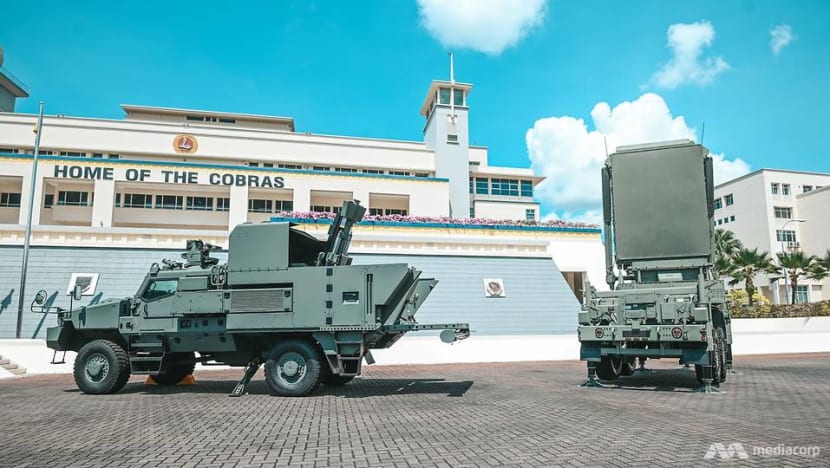
The BELREX Protected Combat Support Vehicle (Mortar) and TPQ-53 Weapon Locating Radar (WLR) at Mandai Hill Camp. (Photo: Hanidah Amin)
SINGAPORE: The Singapore Army’s 3rd generation force is now fully operational, after a capstone exercise conducted in March this year, the Ministry of Defence (MINDEF) said on Wednesday (Jun 30).
With the completion of this transformation, the Singapore Armed Forces (SAF) will continue to develop its next-generation army to tackle new and increasingly complex security challenges, added MINDEF.
The capstone exercise in March tests the capabilities of Singapore’s 3rd generation Combined Arms Division (CAD), a key component of the army’s transformation which started in 2004.
The exercise involved active and operationally ready national servicemen from the 3rd Division and its units. It required soldiers to conduct live execution in local training areas and carry out large-scale operations in a computer-simulated environment.

Reaching full operational capability means that the division has managed to achieve a certain set of outcomes during operations, said Assistant Chief of the General Staff (Plans) Colonel Xu Youfeng during a media briefing.
“Along with it means the units are fully staffed, fully formed, equipment, capabilities have to go online and operationalise.”
READ: Defence budget up this year, as MINDEF spent less than planned in 2020 due to delayed projects: Ng Eng Hen
READ: SAF to set up sustainability office, trial cleaner fuels for some fighter jets in latest push to go green
This is a manifestation of the 3rd generation army’s fighting concept of precision warfare, he added.
Col Xu said: “Overall, through the 3rd gen CAD (Combined Arms Division) capstone exercise, we have successfully demonstrated the ability of the army to fight as an integrated and networked force, bringing precision warfare capabilities to bear on the battlefield.
“The developments that we have undertaken as part of our 3rd gen transformation provides us a strong foundation as we continue to make progress in our transformation into the next-gen fighting force, underpinned by new concepts and technologies.”
READ: ‘Smart’ RSAF airbases to use drones to detect intruders, more efficient munitions loader will be deployed
NEXT-GENERATION ARMY
On Monday, Minister for Defence Ng Eng Hen was briefed on the progress made by the Singapore Army in its next-generation transformation during a visit to the Headquarters Sense and Strike at Mandai Hill Camp.
The next generation army will face an “even more diverse array of threats and operational demands”, such as new technologies employed in the battlefield and the increased accessibility to advanced technology around the world, said Col Xu on Wednesday. It also has to deal with a shrinking pool of enlistees, with the eligible male enlistee population expected to decline by a third in 2030.
“Therefore, we have to be more efficient in the use of our limited manpower resources, but yet continue to be operationally effective,” he said.
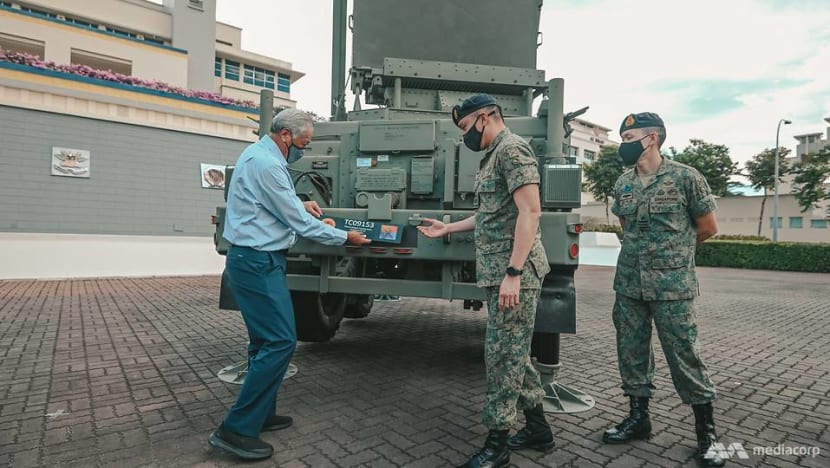
The new Headquarters Sense and Strike was inaugurated in November last year. It will leverage on emerging technology to “see better” and “shoot faster” with less manpower, said MINDEF.
“The new HQ Sense and Strike is a key piece of the army's transformation as a future-ready force - leaner and more capable. It entails the reorganisation of HQ Army Intelligence, HQ Artillery, under HQ 6 Division,” said Col Xu.
This is to “enhance mutual understanding” between army intelligence and artillery, and improve synchronisation, he added.
READ: SAF has achieved ‘herd immunity’ through COVID-19 vaccinations; IPPT, in-camp training resume: Ng Eng Hen
READ: SAF to review PES medical classification system, paving the way for servicemen to be deployed in more roles
The Singapore Army acquired several new technologies and equipment for its next generation transformation.
The TPQ-53 Weapon Locating Radar (WLR) will provide early detection and warning of hostile rockets, artillery and mortar threats, to allow the army to swiftly counter attacks from enemy artillery forces. With an increased radar coverage, this new piece of equipment will be able to determine the location of hostile threats at a range of up to 60km, up from 50km previously.
As the TPQ-53 WLR is highly automated, it requires about 30 per cent less manpower to operate compared with its predecessors, said MINDEF.
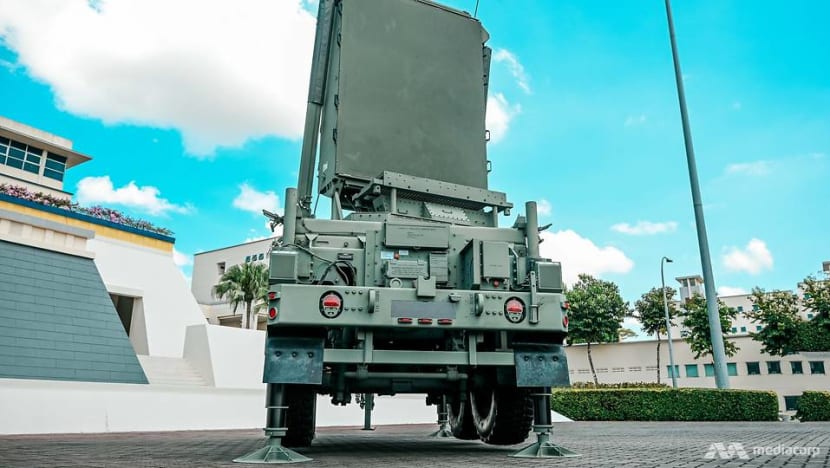
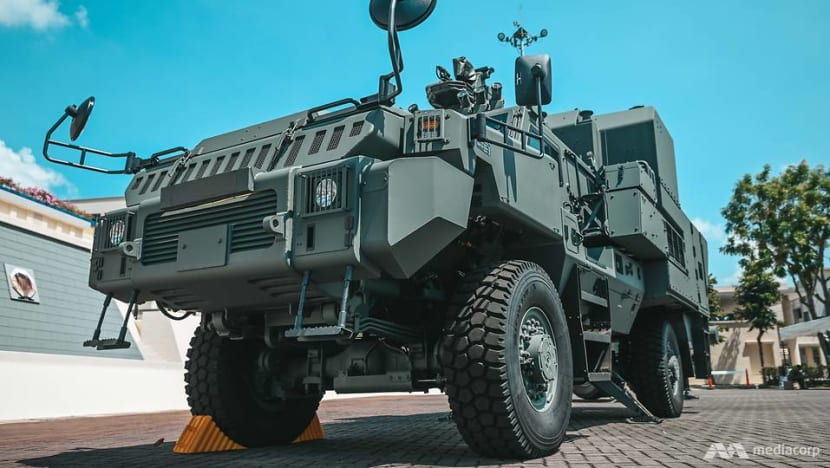
Another piece of equipment is the BELREX Protected Combat Service Vehicle (Mortar), a new mortar variant of the BELREX vehicles and requires less manpower to operate. It can be quickly deployed for responsive fire support.
Jointly developed by the army, Defence Science and Technology Agency (DSTA) and ST Engineering Land Systems, this vehicle also provides operators with protection against small-arm fires and mine blasts, and its “shoot and scoot” capability enhances the survivability of the operators.
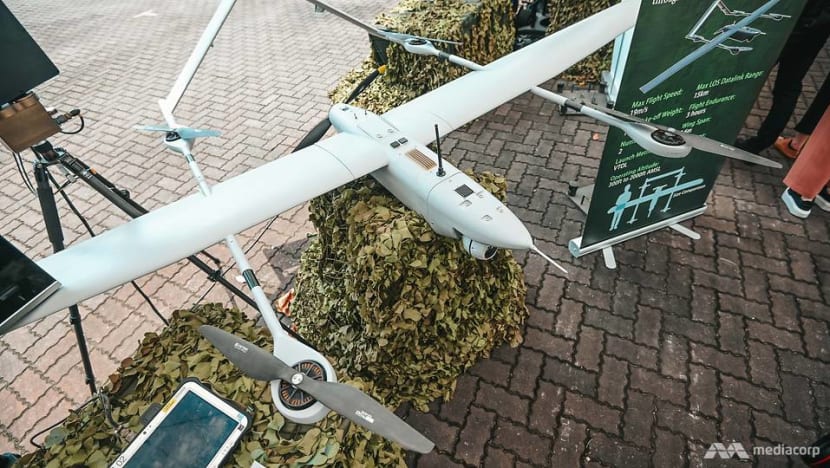
In addition, Dr Ng Eng Hen on Monday unveiled the new VELOCE 15 mini-Unmanned Aerial Vehicle (UAV). The first locally developed hybrid vertical take-off and landing fixed wing system is developed by the army, DSO National Laboratories, DSTA and ST Engineering.
The UAV provides high-resolution live imagery to conduct “last-mile aerial surveillance”, especially in areas where it is difficult to deploy ground forces, said MINDEF. It is currently undergoing trials.












